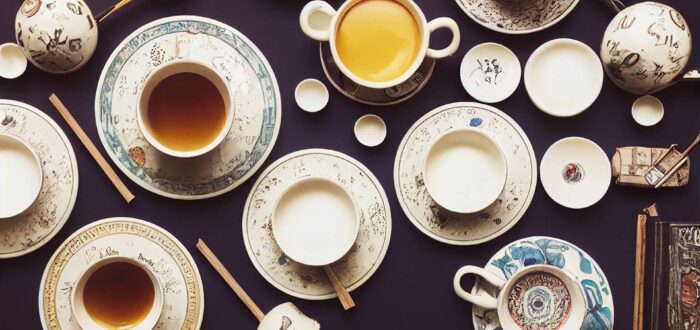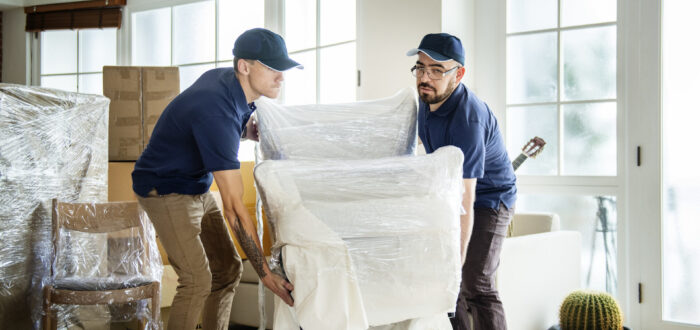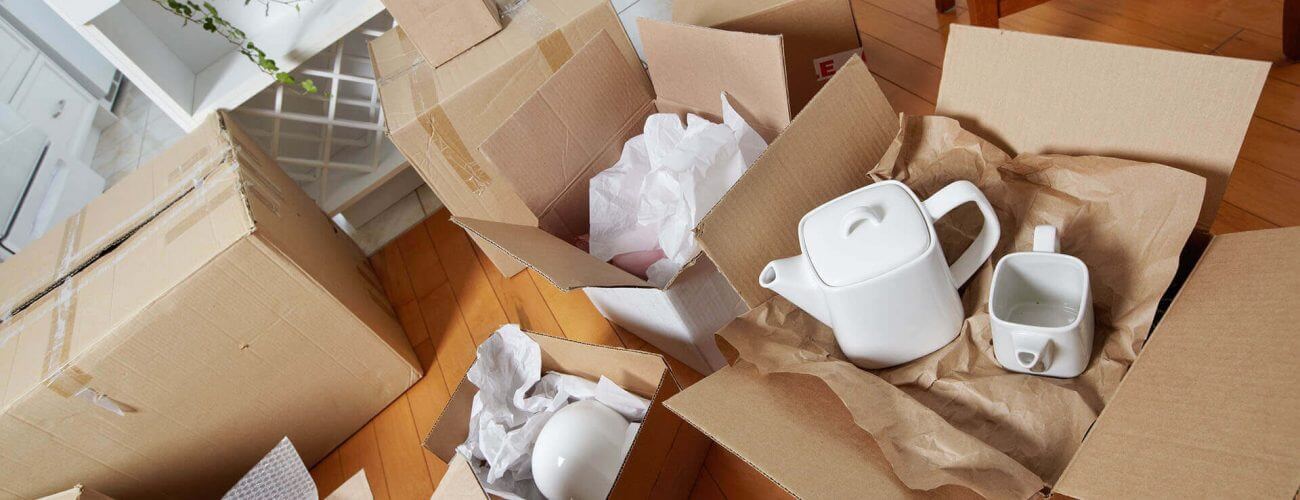

Secure and Safe – How to Pack Ceramics for Moving Cross-Country
Posted in How-to on February 21, 2024
When planning a cross-country relocation, knowing how to pack ceramics for moving is essential to ensure their safety. Ceramic pieces, with their fragility and sentimental value, demand specific packing techniques. This guide offers detailed steps to securely wrap and cushion your ceramic items, guaranteeing they arrive intact at your new destination.
How to Pack Ceramics for Moving?
Packing ceramics for relocating to a new state requires careful attention to detail to prevent damage. Start by selecting a sturdy box slightly larger than the ceramic item. Wrap each piece individually with bubble wrap, securing it with tape.
Place the wrapped ceramics in the box, ensuring they don’t touch each other. Fill any empty spaces in the box with foam peanuts or crumpled packaging paper to prevent movement during shipping. Finally, seal the box with tape and label it as ‘Fragile’ to ensure careful handling.
First, Choose the Right Materials for Packing Fragile Items
How to pack ceramics for shipping? Selecting the appropriate packaging materials is a crucial first step when wrapping fragile items such as ceramics for a cross-country relocation.
The right supplies provide adequate protection and ensure the integrity of your delicate possessions during the long journey.
To safely wrap your ceramic pieces, essential supplies include bubble wrap, paper, strong tape, and sturdy boxes. The goal is to create a protective cocoon around each item, cushioning it against shocks and vibrations while in a relocation truck.
Alternatives to Traditional Packing Materials You Can Try
If you’re looking for alternatives to traditional packaging materials, household items can be surprisingly effective. Old linens, towels, and thick clothing can serve as protective wraps or padding. They are especially useful for filling empty spaces in boxes, providing a cushioning effect.
Similarly, newspaper can replace packaging paper for a layer of protection, although be cautious as the ink may smudge. Don’t put newspapers in direct contact with your belongings. For an eco-friendly option, consider using biodegradable materials such as recycled paper products or biodegradable packaging peanuts.
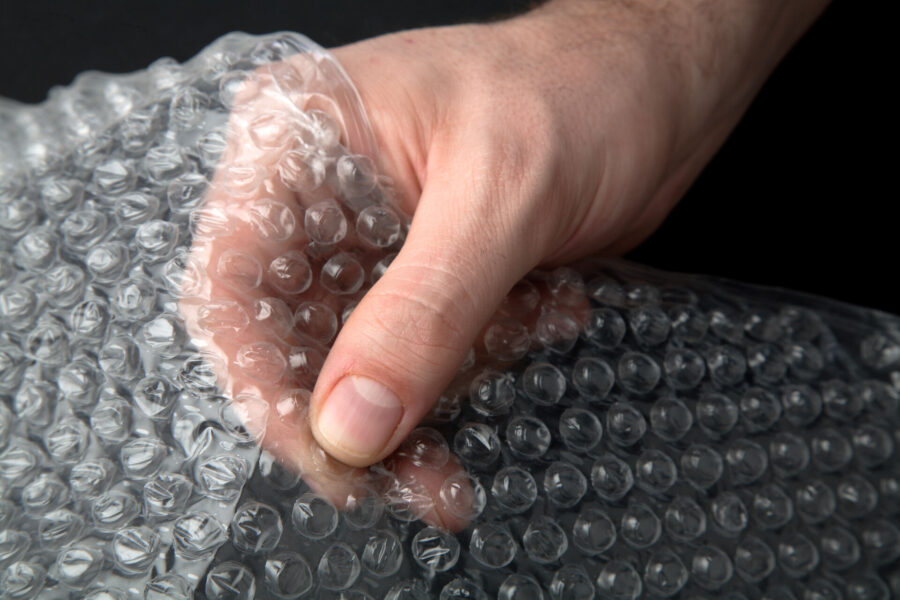
Follow Our Fragile Item Moving Guide to Wrapping Ceramics
Packaging fragile items like ceramics requires a methodical approach to ensure their safety. Begin by gathering all necessary materials. Lay out a soft, clean surface to work on. Start with a layer of packaging paper, gently wrap each ceramic piece, and secure it with tape. Next, add a layer of bubble wrap for additional cushioning, again securing with tape. This dual-layer approach provides both surface protection and shock absorption.
Ceramic Packing Strategies for Maximum Protection
For maximum protection, focus on the most vulnerable parts of the ceramic item first. Pay special attention to handles, edges, and any protruding details. Ensure these areas are well-padded. Use extra bubble wrap and secure with tape.
The goal is to have no direct pressure points that could lead to cracks or breaks. Once the delicate areas are secured, wrap the entire piece, following the contours closely. Remember, the better the fit of the wrapping, the less room there is for movement and potential damage.
Secure Boxing Techniques – How to Strategically Pack Everything in Boxes
After protective wrapping for ceramics, the next step is boxing. Select a medium-size relocation box, allowing space for additional padding. Tape the bottom of the box to ensure it won’t break due to the weight of the ceramics when lifted. Place a layer of crumpled packaging paper or foam peanuts at the bottom for a cushioned base.
Carefully place your wrapped ceramics in the box, ensuring they do not touch each other. Fill any remaining gaps with padding materials to prevent movement inside the box. Once packed, gently shake the box to check for movement. If the contents shift, add more padding. Seal the box with strong packing tape and clearly label it as ‘Fragile’ to alert handlers.
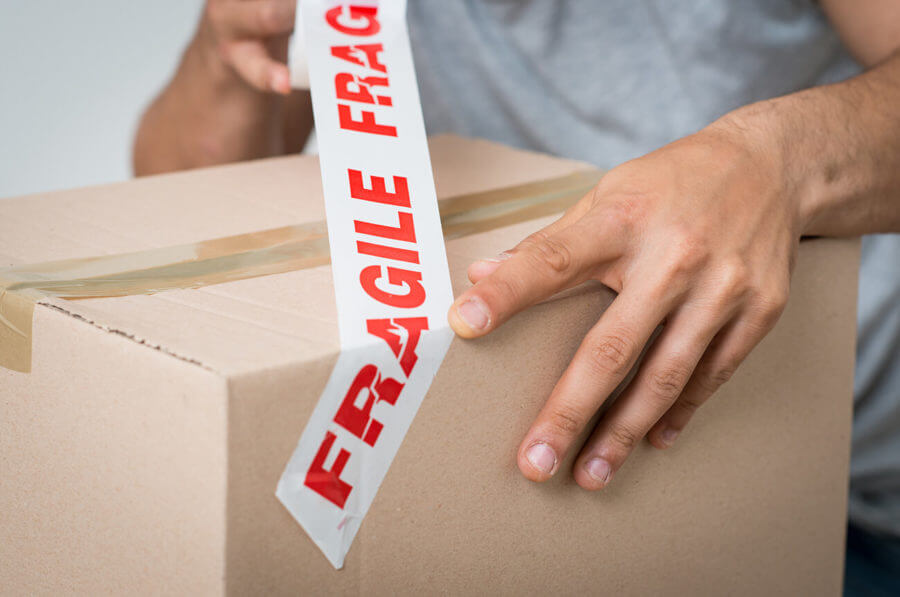
Implement Advanced Packing Tips for Special Pieces
When dealing with special ceramic pieces like antiques or uniquely shaped items, a standard packing approach may not suffice. These pieces often require advanced wrapping techniques to accommodate their unique vulnerabilities and value. Start by assessing the item carefully, noting any weak spots or intricate details that demand extra protection.
Use soft packaging paper to wrap the piece, conforming closely to its shape, and secure it with tape. For added protection, cut pieces of cardboard or use foam board to create a custom-shaped barrier around the most fragile parts, such as protruding elements or fine details.
Custom Solutions for Oversized or Heavy Pieces
Heavy or large items require a custom solution to ensure their safety during a move. For such items, consider booking a custom crating service from your relocation company, such as the Cross Country Movers. The crate should be slightly larger than the item, allowing space for ample cushioning material on all sides. Line the crate with foam or bubble wrap before placing the item inside.
For additional security, strap the item to the base of the crate to prevent any shifting. Close the crate securely and label it properly, indicating the top side and noting the item as fragile to ensure proper handling during the move.
Handling Antique or Uniquely Shaped Ceramic Items
Antique or uniquely shaped ceramic items present a challenge due to their irregular contours and often fragile nature. For these items, consider creating a custom support structure inside the box – or a custom crate, as it would work great as well.
Use crumpled packing paper or foam to create a nest that holds the item securely in place. You can also use foam padding to fill voids and provide support from all sides. Ensure that the item is immobile once nestled inside the box, as movement is a primary cause of damage.
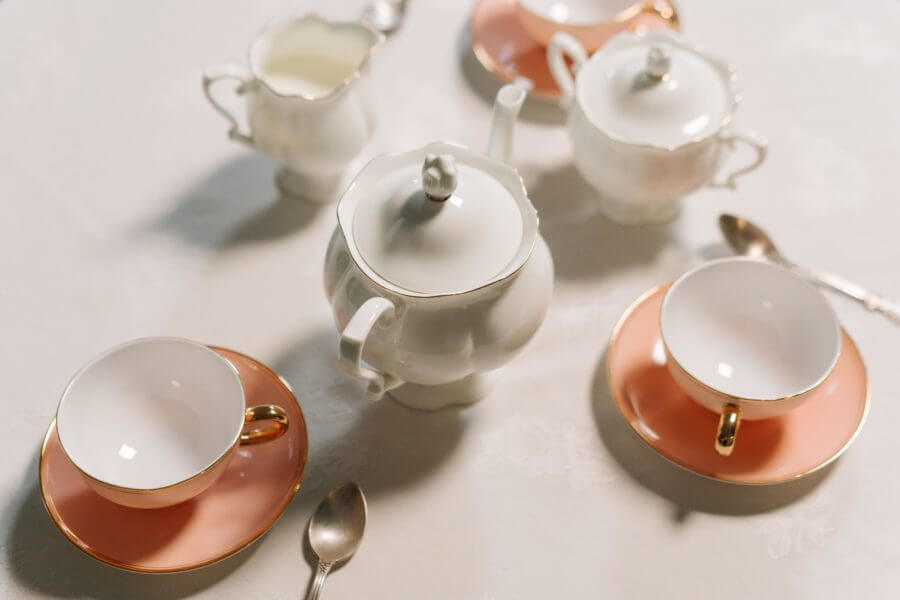
Prepare for the Safe Shipping of Fragile Belongings
First and foremost, ensure all ceramic items are individually wrapped and cushioned, as described in the previous steps. Once each piece is securely wrapped, focus on preparing for shipping. Consider creating a relocation inventory of the packed items, especially if they hold significant value, both financially and sentimentally. This inventory list will not only assist in keeping track of your belongings but also prove invaluable in case of any insurance claims.
What You Need to Know About Movers Loading Ceramic Items for Safe Transportation
When professional movers load your ceramic items for transportation, there are key things to be aware of to ensure their safety. Experienced movers will typically load fragile items last, placing them in positions where they are least likely to shift or be compressed by heavier objects. They may use specialized equipment, such as dollies or hand trucks, to transport these boxes safely to and from the truck.
Additionally, movers will strategically place these fragile items in the truck where they can be adequately supported and cushioned by other belongings or moving blankets. It’s essential to communicate with your movers about the contents of each box, emphasizing the items that need extra care. Trust their expertise but don’t hesitate to voice any concerns or specific instructions you may have regarding the handling of your valuable ceramics.
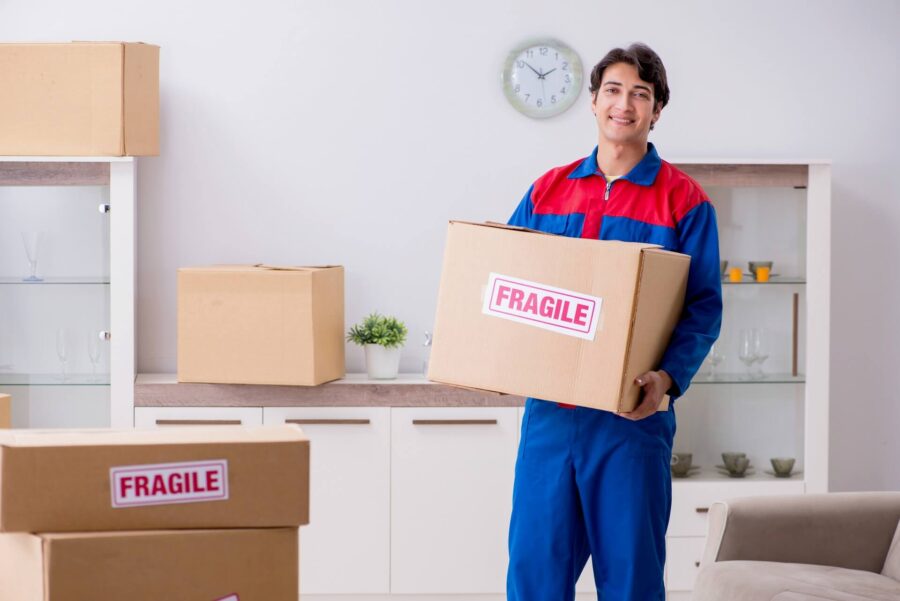
What to Do Post-Move – Unpacking Ceramics Safely
Unpacking after relocation is as important as packing. Begin by choosing a clear, flat surface to work on, preferably in an area with minimal foot traffic to avoid accidents. Carefully open the boxes marked as ‘Fragile’, using a cutter or scissors with caution to avoid jarring the contents.
Gently remove the top layer of cushioning materials, and carefully take out each ceramic piece, unwrapping them one at a time. Inspect each item as you unpack for any signs of damage that might have occurred during the move. It’s a good practice to do this systematically, keeping a record if you find any issues, especially if you need to report damages for insurance purposes.
Tips for Checking and Placing Ceramics in Your New Home
Once you have safely unpacked and inspected your ceramics, the next step is to find the perfect spot for them in your new apartment. Consider the layout and traffic patterns of your space. High-traffic areas might not be ideal for delicate items. Ensure that shelves or display cabinets are stable and away from potential hazards like doors or windows that might cause vibrations.
When placing ceramics, maintain a safe distance between items to avoid contact and potential chipping. If displaying heavier pieces, ensure the surface or shelf can bear the weight without risk of collapse. Additionally, keep them out of direct sunlight to prevent fading and away from extreme temperatures which can cause cracking.
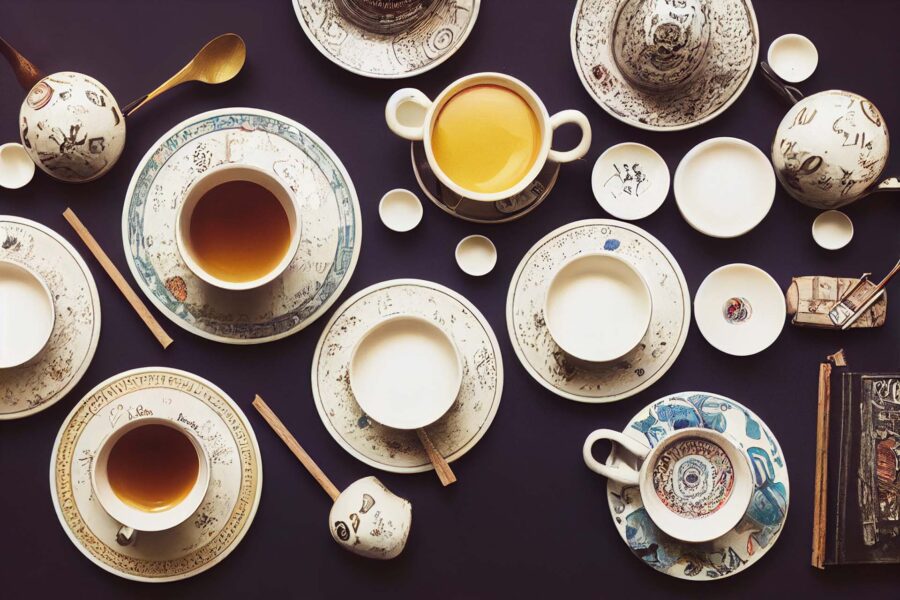
Why Should You Hire Long-Distance Movers to Assist You?
Hiring movers can greatly ease the complexity of relocating over great distances and reduce relocation stress. Professional movers bring expertise, efficiency, and safety to the relocation process, which can be especially beneficial for those unfamiliar with the intricacies of a long-haul move. Here are some key benefits of relocating with movers:
- Professional movers have the skills to pack efficiently and load items, ensuring their safety during transit.
- They handle the heavy lifting and logistics, saving you significant time and energy.
- Movers come equipped with the right tools and materials, like moving blankets and dollies, for safe transport.
- Hiring professionals adds a level of reliability and accountability to your move.
- Entrusting the physical aspect of moving to experts can greatly reduce your anxiety about relocating.
- Professional movers often offer options for insurance coverage, providing peace of mind in case of any mishaps.
Our Team at Cross Country Movers Can Easily Handle Moving Delicate Belongings – Reach Out for Assistance
At Cross Country Movers, our experienced team specializes in handling delicate belongings with utmost care and precision. You can trust that our long-distance movers will provide expert cross-country moving services. We understand the anxiety that comes with long-distance moving, and our skilled professionals are equipped with the knowledge and tools to ensure their safe transport.
From professional packing assistance to secure loading, we manage every aspect of relocating your precious items. Whether it’s family heirlooms, fine art, or sensitive electronics, trust us to deliver everything safely to your new home. Contact us for reliable assistance in relocating – we’re here to make your transition smooth and worry-free.
Frequently Asked Questions
What Are the Best Materials for Packing Ceramics?
The best materials for packing ceramics include bubble wrap, packing paper, and sturdy boxes. Bubble wrap offers excellent cushioning while packing paper provides a soft layer to prevent scratches. Using double-walled boxes adds extra protection against external impacts. Foam peanuts and inflatable airbags can also be used to fill voids in the boxes, preventing the ceramics from shifting during transit.
How Do I Wrap and Pack Oddly Shaped Ceramic Pieces?
For oddly shaped ceramic pieces, start by wrapping them in packing paper, followed by bubble wrap, ensuring all protruding parts are well-protected. Use additional padding like cut pieces of foam or bubble wrap to provide extra protection around the most vulnerable areas. Secure the wrap with tape and place the item in a box that allows for enough cushioning on all sides.
What Should I Do If a Ceramic Piece Is Particularly Valuable or Antique?
For particularly valuable or antique ceramic pieces, consider custom crating for the highest level of protection. Use packing paper to wrap the item, followed by a layer of bubble wrap. You may also want to consult with a professional moving company that specializes in handling antiques for their expert services and advice.
